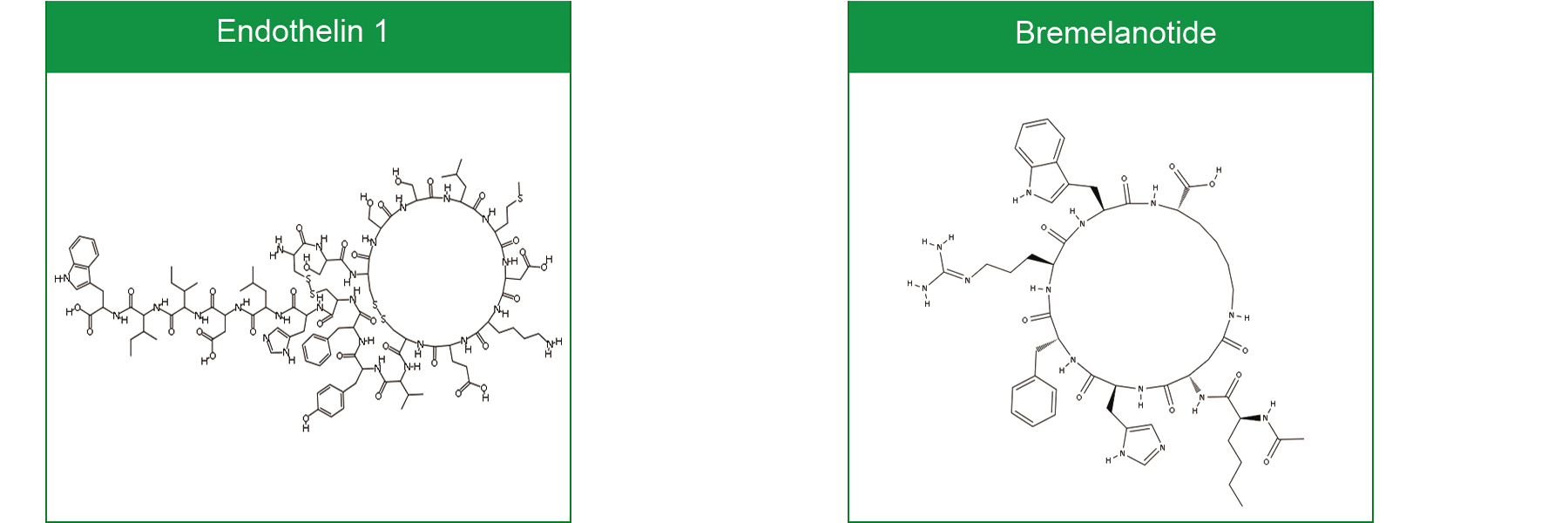Cyclic Peptide Synthesis

Peptide are a class of compounds with amide bonds, divided into linear peptide compounds and cyclic peptide compounds. In the 1940s, the scientist discovered the first antibacterial Gramicidin S cyclic peptide in history. In the past few decades, people have isolated a large number of cyclic peptides with special structures from plants, bacteria, fungi and marine organisms.
Cyclic peptides are compounds that are ubiquitous in nature and have a variety of biological activities and physiological functions, which are much more stable than linear peptides. Cyclic peptides have high medical value due to their different biological activities such as immunosuppressive , antibacterial activity, anti-AIDS virus , tryptase inhibitory activity,
Cyclic peptides found in nature
Cyclic peptides are widely distributed in nature. Animals, plants, fungi, bacteria and marine organisms all contain cyclic peptides with special structures. Most of the cyclic peptides are derived from marine organisms. Although the content is very low, many cyclic peptides has obvious physiological activity.
In 1944, Gause et al. isolated a 10 amino acid cyclic peptide, Gramicidin S (CS) from the bacteria Bacillus brevis in the soil. This is the most detailed study to date that interacts with cell membranes. Cyclic peptide antibiotics have strong antimicrobial activity, especially for G+ bacteria and some pathogenic fungi.Through further research on its structure and activity, it is found that the cyclic structure is very important for its retention of biological activity. In 1969, CS's biosynthesis method was clarified that it was not synthesized by the highly specific ribosomal controlled by tRNA, but by the non-ribosomal synthesis determined by multiple enzyme complexes arranged together.
Chemical synthesis strategy of cyclic peptide
Natural cyclic peptides often contain uncommon amino acids, such as D-amino acids, α-amino acids, andα-βdidehydroamino acids, etc. They are mainly divided into two categories: Homodetic peptides and Heterodetic peptides
Homodetic peptides:All are composed of amino acids and strictly follow the peptide bond to form a homogeneous cyclic peptide.
Heterodetic peptides:the main chain is composed of peptide bonds, and other functional groups such as disulfide bonds, ester bonds, ether bonds, thioether bonds that form a ring and contain non-amino acid composition pseudopeptides are called heterocyclic peptides.

1.The synthesis of homocyclic peptides is essentially a process of forming an intramolecular peptide bond. The concentration of the reactants has a direct effect on the yield. High concentration is easy to cause intermolecular polymerization, so the reaction generally must be carried out under highly diluted conditions.It divided into liquid phase synthesis and solid phase synthesis method.
The solution method is a classic synthesis method. The formation of linear peptides is an intramolecular reaction. In order to avoid intermolecular reactions to form linear or cyclic dimers and polymers, it is generally used in a highly diluted solution (10-3-10- 4 mol/L) in the solution method to synthesize cyclic peptides can be directly reacted, and the solution method is mainly used to synthesize head-to-tail cyclic peptides. With the improvement of solid-phase synthesis technology, because the reaction does not need to be carried out in a highly diluted solution, excess condensation reagents and by-products can be removed by washing and filtration, making everyone more and more inclined to solid phase synthetic cyclic peptide
The solid-phase synthesis of cyclic peptides is cyclized on the resin and then falls off, to avoiding the formation of intermolecular dimerization and multimerization. In recent years, with the development of milder orthogonal protection strategies, the emergence of effective condensation reagents and the continuous development of separation methods, more and more people tend to synthesize cyclic peptides by solid-phase methods. Solid phase synthesis commonly used resins such as MBHA, Oxime and PAM. Amino acid side chains (such as Asp, Glu side chain carboxyl; Ser, Thr, etc. side chain hydroxyl and carboxyl end can be fixed on the resin by condensation reaction
The advantage of the solid-phase synthesis method over the liquid-phase method is that the solid-phase synthesis can reduce the intermolecular polymerization by adjusting the resin loading capacity, thereby increasing the yield and purity of the cyclic peptide.
2 .The synthesis of Heterodetic peptides
The non-amide bonds existing between the amino acid (including non-protein amino acid) residues of heterocyclic peptides are mainly ester bonds and disulfide bonds. The formation of ester bonds is similar to the formation of amide bonds. Disulfide bonds are relatively different from the synthesis of homogeneous cyclic peptides. The formation of intramolecular disulfide bonds needs to be carried out under high dilute conditions to avoid the formation of intermolecular disulfide bond. In recent years, the acid chloride method used to synthesize cyclic peptides has gradually been promoted, with short reaction time and relatively convenient post-processing.
Omizzur has accumulated rich experience in the field of cyclic polypeptide synthesis include head to tail cyclization,side chain cyclization,single or multiple disulfide bridges, any needs please contact our customer service staff.
Customer Service Center
Soild-Phase Peptide Synthesis
Copyright © 2020 Omizzur Inc | Terms & Conditions | Privacy Notice | Sitemap